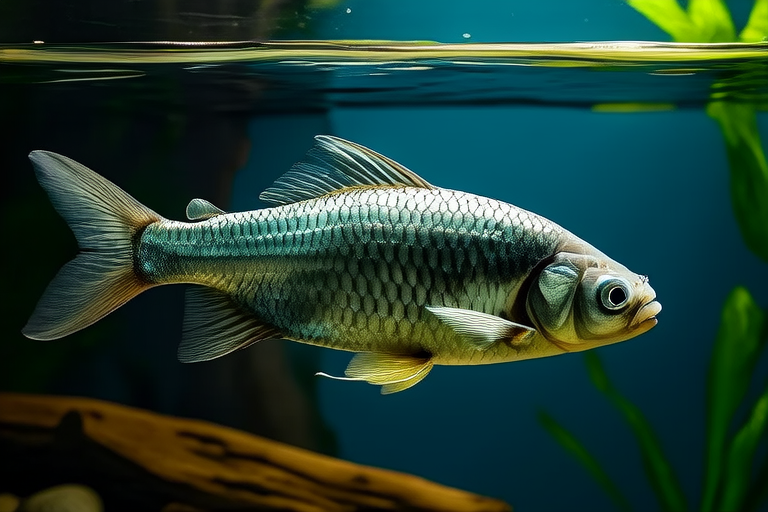A Complete Guide to Keeping Your Arowana Healthy and Happy
Introduction
The Arowana is a fascinating and highly sought-after species among aquarium enthusiasts. Known for its striking appearance and regal presence, this fish demands special attention to ensure it thrives in captivity. This guide will walk you through everything from setting up the perfect tank to recognizing signs of stress or illness.
Optimal Tank Setup
Creating an ideal habitat starts with choosing the right tank size. Arowanas are large, active fish that need ample space to swim freely. For a single adult, aim for at least 180 gallons (680 liters). Larger tanks offer more stability in water conditions and reduce stress.
Substrate choice can influence water quality; fine gravel or sand works best. Decorate your tank with robust plants like Java ferns or driftwood, which provide hiding spots and mimic natural environments. Ensure decorations don’t have sharp edges that could injure your fish.
Lighting should be moderate, avoiding excessive brightness that might cause stress. Install a powerful filtration system capable of handling daily waste removal efficiently without disturbing the water flow too much.
Water Parameters
Maintaining stable water parameters is crucial for keeping Arowanas healthy. Optimal pH levels range between 6.5 and 7.5, while hardness should stay within 4-12 dGH. Temperature should be kept steady between 78°F and 84°F (25°C – 29°C).
Regular testing using reliable test kits helps monitor these values accurately. Perform partial water changes weekly, replacing about 10-20% of total volume each time. This prevents harmful substances from accumulating over time.
Diet and Feeding Habits
Arowanas are carnivorous predators requiring a balanced diet rich in proteins. Feed them live foods such as feeder fish, earthworms, crickets, or shrimp. Supplement their meals with high-quality pellets designed for predatory species.
Feed young Arowanas twice daily, reducing frequency as they mature. Adults generally require one meal per day. Overfeeding leads to poor digestion and potential health problems, so observe how much food your fish consumes within two minutes and remove any leftovers promptly.
Exercise Needs
Arowanas are naturally curious and energetic, needing plenty of room to explore and swim. Large tanks allow them to exhibit natural behaviors like leaping out of the water occasionally. Ensure there’s no risk of escape by covering the tank top securely.
Provide floating objects like leaves or artificial lures to encourage jumping behavior safely. This activity keeps them physically fit and mentally stimulated.
Common Health Issues
Despite proper care, Arowanas may still encounter health challenges. Common ailments include bacterial infections, parasites, and nutritional deficiencies. Early detection through regular observations can prevent severe complications.
Look out for signs like lethargy, loss of appetite, frayed fins, or unusual spots on the body. Consult with a veterinarian specializing in exotic fish if symptoms persist. They can recommend appropriate treatments based on diagnosis.
Tips for Maintaining a Stress-Free Environment
Minimizing stress factors contributes significantly to your Arowana’s overall happiness. Avoid sudden loud noises or rapid movements near the tank. Introduce new fish slowly to avoid aggressive encounters.
Keep the lighting consistent throughout the day to maintain circadian rhythms. Regular maintenance routines create predictable patterns, helping your pet feel secure.
Conclusion
By following this comprehensive guide, you’ll be well-equipped to provide top-notch care for your Arowana. Remember, diligent monitoring and prompt action when necessary are key to ensuring long-term success. With patience and dedication, you can enjoy watching your magnificent Arowana flourish in its aquatic home.
